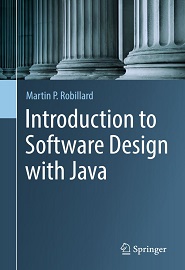
English | 2019 | ISBN: 978-3030240936 | 297 Pages | PDF | 10 MB
This textbook provides an in-depth introduction to software design, with a focus on object-oriented design, and using the Java programming language. Its goal is to help readers learn software design by discovering the experience of the design process. To this end, a narrative is used that introduces each element of design know-how in context, and explores alternative solutions in that context. The narrative is supported by hundreds of code fragments and design diagrams.
The first chapter is a general introduction to software design. The subsequent chapters cover design concepts and techniques, which are presented as a continuous narrative anchored in specific design problems. The design concepts and techniques covered include effective use of types and interfaces, encapsulation, composition, inheritance, design patterns, unit testing, and many more. A major emphasis is placed on coding and experimentation as a necessary complement to reading the text. To support this aspect of the learning process, a companion website with practice problems is provided, and three sample applications that capture numerous design decisions are included. Guidance on these sample applications is provided in a section called “Code Exploration” at the end of each chapter. Although the Java language is used as a means of conveying design-related ideas, the book’s main goal is to address concepts and techniques that are applicable in a host of technologies.
This book is intended for readers who have a minimum of programming experience and want to move from writing small programs and scripts to tackling the development of larger systems. This audience naturally includes students in university-level computer science and software engineering programs. As the prerequisites to specific computing concepts are kept to a minimum, the content is also accessible to programmers without a primary training in computing. In a similar vein, understanding the code fragments requires only a minimal grasp of the language, such as would be taught in an introductory programming course.
Resolve the captcha to access the links!